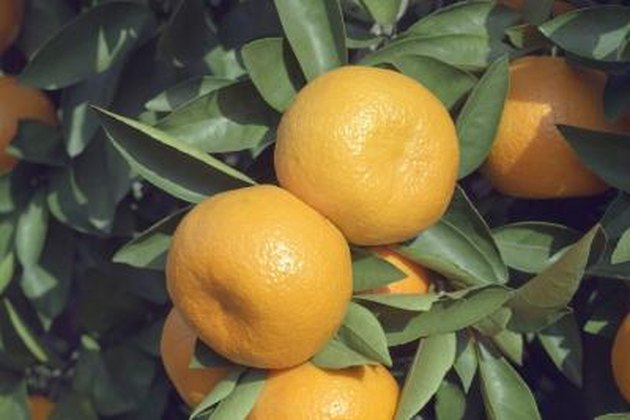

A horizontal cut should be made at either the top or the bottom of the vertical cut to produce a “T-shape” The horizontal cut should be made a slightly upward-pointing angle and should reach through the bark. Using a sharp knife, a 2.5–3.8 cm (1–1.5 in) vertical cut should be made in the stem of the rootstock, through the bark.

The area to be joined should be pruned to remove any thorns or twigs and the cut made approximately 15 cm (6 in) from the ground. The simplest way to join the budwood the the rootstock is by T-budding. These budsticks can be stored for 2–3 months under the correct conditions but it is best to use them as soon as possible after cutting. The budwood to be used for propagation should be trimmed to create budsticks which are 20–25 cm (8–10 in) by removing any unwanted wood and leaves. The use of diseased budwood can cause the spread of many serious citrus diseases which can kill trees. It is extremely important to only collect budwood from disease-free trees. The twigs should have well developed buds and should be as close as possible to the diameter of the rootstock onto which it will be joined.

Twigs (budwood) should be collected from the previous growth flush or the current flush so long as the twig has begun to harden. Common rootstocks for grafting and budding of citrus trees include sour orange and rough lemon.īudding should be carried out when seedling stems have reached roughly the diameter of a pencil (6–9 mm/0.25–0.36 in) and at a time when the bark of the rootstock tree is slipping (this is the term used to describe a period of active growth when the bark can be easily peeled from the plant). Budding is commonly used in citrus propagation as it is the easier of the two processes and works very well. Budding is a special type of grafting where the scion that is joined to the rootstock consists of a single bud. Grafting is the process by which a scion from plant is joined to the rootstock of another to produce a new tree. Mandarin orange seedlings are usually produced by grafting or budding to an appropriate rootstock as seeds will not produce fruit true to type.

Mandarin orange trees require full sun and should be protected from wind. Soil must be deep enough to permit adequate root development. Trees will grow best when planted in a well-draining sandy loam with a pH between 6.0 and 7.5. The trees will tolerate drought conditions but perform poorly in water-logged soil. Fruit will also be damaged by freezing conditions. Mature mandarin orange trees can survive short periods of freezing, whereas young trees will be killed. They will grow best at temperatures between 12.8 and 37.8☌ (55–100☏) during the growing season and 1.7 to 10☌ (35–50☏) during dormancy. Mandarin oranges are subtropical plants and the trees grow best in regions with a pronounced change in season.


 0 kommentar(er)
0 kommentar(er)
